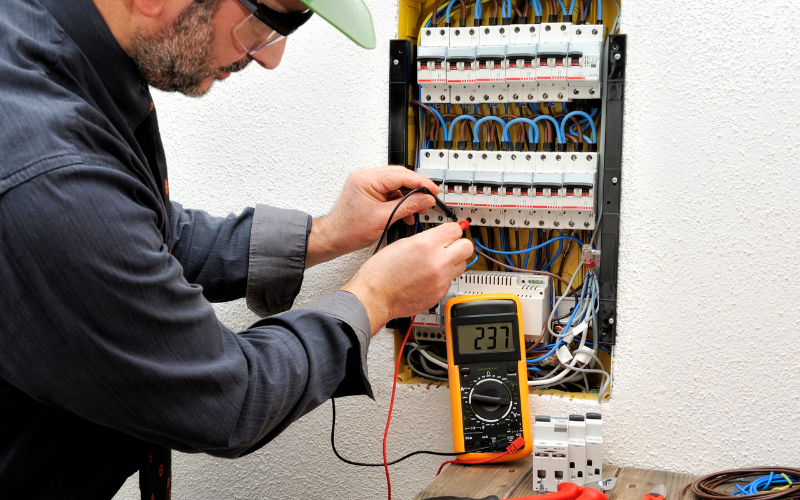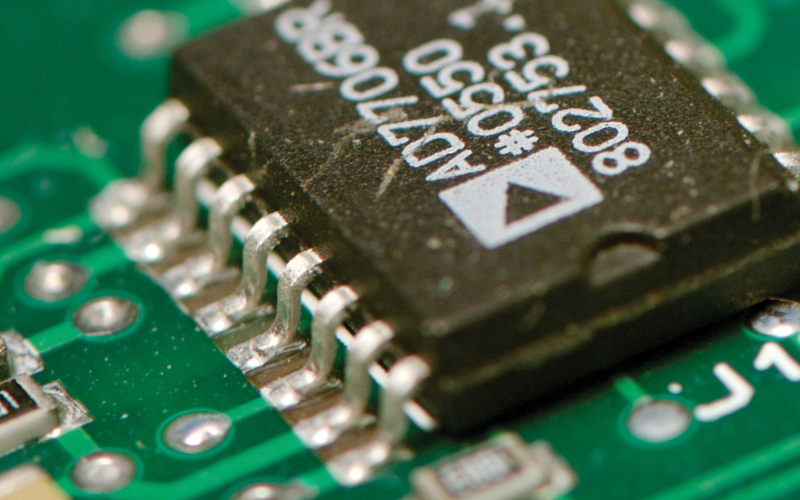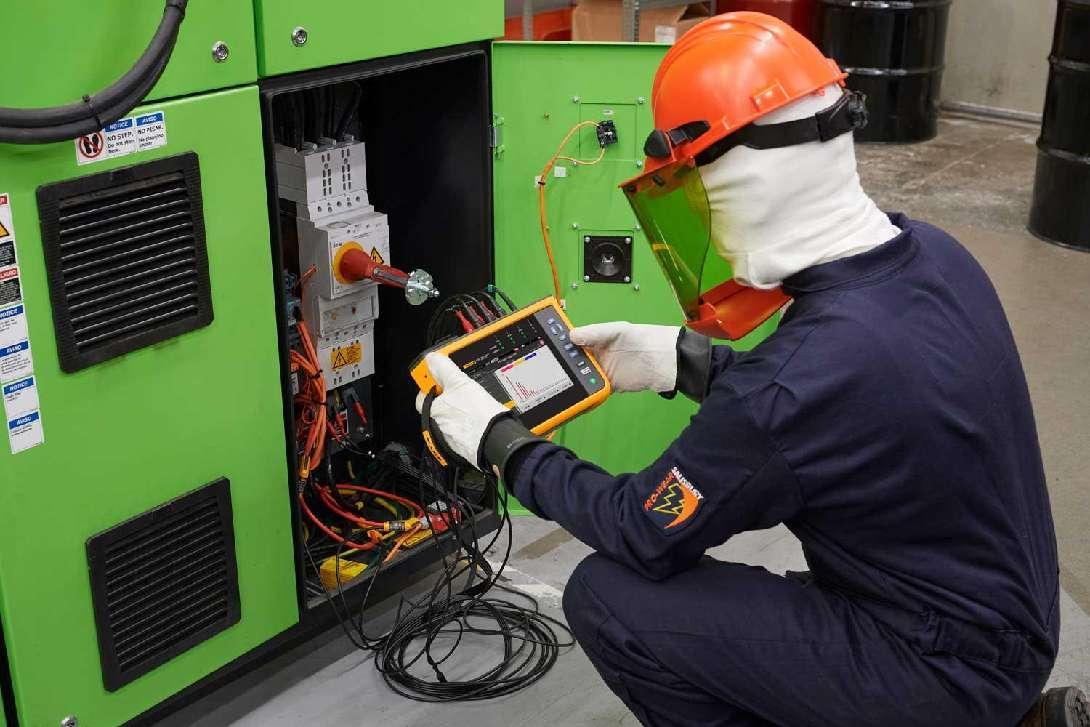What is Power Quality in Electrical Engineering?
Power quality is one of the most important factors in electrical engineering. Maintaining a steady, dependable, and high-quality electrical energy supply is necessary to keep our contemporary world running smoothly. We’ll dive into the fascinating topic of power quality in this blog article, discussing its importance, the key variables affecting it, and practical solutions for power quality issues.
The Importance of Power Quality

Reliable Power Supply
In its most basic form, power quality standards refer to the electrical power supply’s dependability. Maintaining excellent power quality standards becomes especially important in a society where companies, services, and technology all depend more and more on a steady supply of electricity. Any disruption or distortion in the power supply may result in lost productivity, monetary damages, or even possible safety risks.
Economic Impact
Problems with power quality parameters can have serious economic consequences in addition to being a technical annoyance. Businesses run the risk of equipment damage, lost output, and increased maintenance expenses when they encounter power outages brought on by harmonics, voltage sags, or surges. For this reason, stable and growing economies are closely associated with reliable electricity quality.
Impact on Electrical Equipment
The effect of power quality standards on electrical equipment is one of the most obvious signs of its significance. Poor power quality can cause damage or malfunction to sensitive electronic devices, such as computers, medical equipment, and manufacturing machinery. Furthermore, if these devices are frequently exposed to power outages, their lifespan may be greatly shortened.
Environmental Considerations
The ecosystem may potentially experience unforeseen impacts as a result of poor power quality. For example, excessive power use, which is frequently caused by problems with power quality, can result in higher energy consumption, which raises carbon emissions and puts more demand on natural resources.
Public Safety
Another crucial component of electricity quality is safety. The stakes are very high in some industries, such as essential infrastructure and healthcare. A minor power outage can result in potentially fatal circumstances. Ensuring the quality and reliability of power supply is, therefore, a fundamental requirement in such environments.
Main Factors that Impact Power Quality

Voltage Fluctuations
Voltage fluctuations, also known as sags and surges, are common culprits behind power quality issues. Voltage sags refer to a temporary reduction in voltage levels, while surges indicate a sudden increase. Both can lead to equipment damage, reduced efficiency, and operational disruptions.
Harmonics
Harmonics are frequency components of the electrical waveform that are integer multiples of the fundamental frequency. These can distort the waveform, causing problems such as overheating of equipment and poor power factor. Harmonics are often introduced by non-linear loads, such as variable speed drives and electronic devices.
Transients
Electrical transients are short-duration, high-energy disturbances in the power supply. These can be caused by lightning strikes, switching events, or even the startup of large equipment. Transients can damage equipment, disrupt operations, and, in some cases, pose fire hazards.
Frequency Variations
Frequency variations, or deviations from the standard 50 or 60 Hz, can disrupt the operation of certain equipment, particularly those reliant on precise timing, such as clocks, some motor drives, and communication systems.
Power Factor
Power factor is a measure of how effectively electrical power is converted into useful work output. A poor power factor can result in energy wastage and increased utility costs. Power factor correction is necessary to improve the efficiency of electrical systems.
Noise
Electrical noise, often in the form of electromagnetic interference (EMI) and radio frequency interference (RFI), can negatively affect electronic equipment and communication systems. Noise can disrupt signals, leading to data errors and degraded performance.
How to Solve Power Quality Problems

Addressing power quality issues involves a multifaceted approach, depending on the specific problem at hand. Here are some common strategies to solve power quality problems:
Voltage Regulation
Voltage regulation involves ensuring that the voltage levels remain within the specified tolerances. This can be achieved using voltage regulators and tap changers in transformers. By stabilising voltage, you can mitigate voltage sags and surges.
Filtering Harmonics
To tackle harmonic issues, filters can be installed to reduce or eliminate harmonic distortion. Passive filters, active filters, and tuned filters are commonly used to mitigate harmonics, depending on the application.
Surge Protection
Surge protectors, such as surge suppressors and lightning arresters, can be deployed to safeguard equipment from transient voltage spikes. These devices divert excess energy away from sensitive equipment, preventing damage.
Frequency Control
Frequency-related problems can be mitigated by using frequency converters and specialised equipment. These devices help maintain the required frequency for equipment sensitive to frequency variations.
Power Factor Correction
To improve power factor, power factor correction capacitors can be installed. These capacitors help balance the reactive power and reduce the strain on the power distribution system.
Noise Suppression
Electrical noise can be mitigated through the use of shielding, grounding, and filters. Isolating sensitive equipment and ensuring proper grounding can minimise the impact of noise on performance.
Monitoring and Analytics
Continuous monitoring of power quality is essential for identifying and addressing issues promptly. Power quality analysers and monitoring systems provide real-time data, enabling engineers to take preventive or corrective actions.
Education and Training
Training employees and staff on power quality best practices is crucial. It helps create awareness and ensures that personnel know how to respond to power quality issues effectively.
System Redundancy
For critical operations, redundancy in power supply systems can be implemented. This ensures that in the event of a power quality issue, there is a backup source to keep essential systems running.
Conclusion
Power quality is a critical facet of electrical engineering that directly impacts the reliability, efficiency, and safety of electrical systems. It encompasses a wide range of factors, from voltage fluctuations and harmonics to transients and noise, all of which can disrupt operations, damage equipment, and result in economic losses.
Addressing power quality problems requires a comprehensive approach that involves both proactive measures and reactive responses. From voltage regulation and harmonic filtering to surge protection and power factor correction, there are numerous tools and techniques available to mitigate power quality issues.
As our world becomes increasingly electrified and dependent on technology, the significance of power quality will continue to grow. Whether in industrial settings, healthcare facilities, data centres, or everyday households, reliable and high-quality electrical power is the lifeblood of our modern society. Understanding, monitoring, and addressing power quality issues are, therefore, fundamental tasks for electrical engineers and anyone responsible for electrical systems. By doing so, we can ensure that the lights stay on, the machines keep running, and our lives remain powered by the highest standards of quality.

